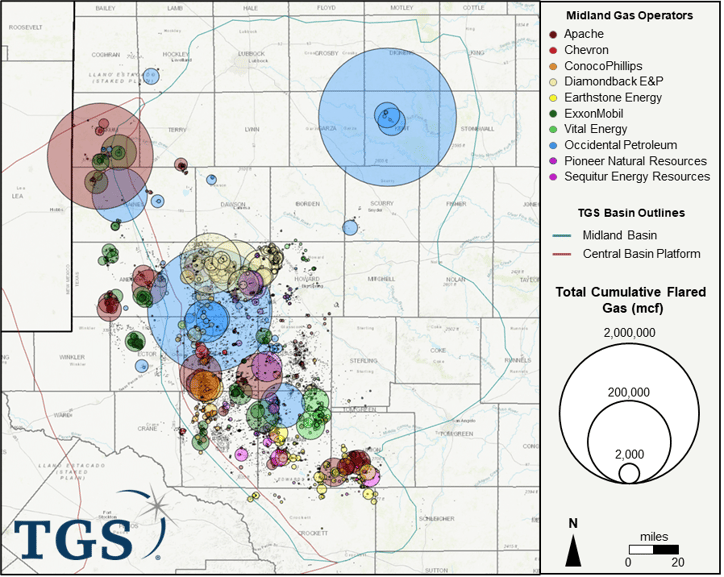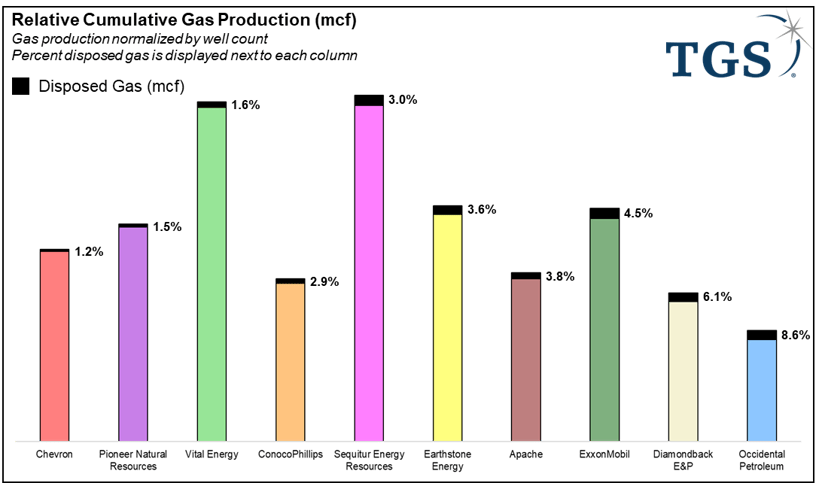Operators are significantly reducing flared gas volumes in the Midland Basin to support emissions targets
Operators in the Midland Basin have ambitious emissions reduction goals and are fast-tracked to achieving them. One of the largest gas producing operators, Chevron, is leading the way for other operators in the basin. Chevron has an emissions reduction goal of 53% by 2028 using a 2016 baseline. Most operators have made similar goals. Large independent Pioneer Natural Resources targets reducing “GHG emissions intensity by 50%” by 2030 using a 2019 baseline, and small independent Vital Energy, formerly Laredo Petroleum, has a similar goal by reducing routine flaring by 52% by 2030 using a 2019 baseline. Reducing natural gas flaring plays an important role in achieving those goals. Today many state regulators are implementing regulations to mandate the reduction.
TGS Longbow Well Performance Application provides an insightful visualization of cumulative flared gas in the region by operator (Figure 1). The data shows some success stories in the Midland Basin. Occidental Petroleum and Diamondback E&P implemented measures resulting in a reduction of the overall amount flared by 33% and 75% in recent years, respectively. Figure 2 illustrates the relative cumulative gas production by operator and the percent disposed gas. Across the spectrum, public and private operators are reducing emissions by flaring lower percentages of produced gas. A large privately held operator, Sequitur Energy Resources, has high-producing gas wells in the Midland Basin while maintaining a low amount of disposed gas at 3%. Other operators, including ExxonMobil, Apache, Earthstone Energy, and ConocoPhillips, are disposing less than 5% of cumulative produced gas. Across the board, many operators are leading the way ahead of state regulations, decreasing their environmental footprint as well as increasing the gas volumes brought to market.
Figures:

Figure 1

Figure 2


